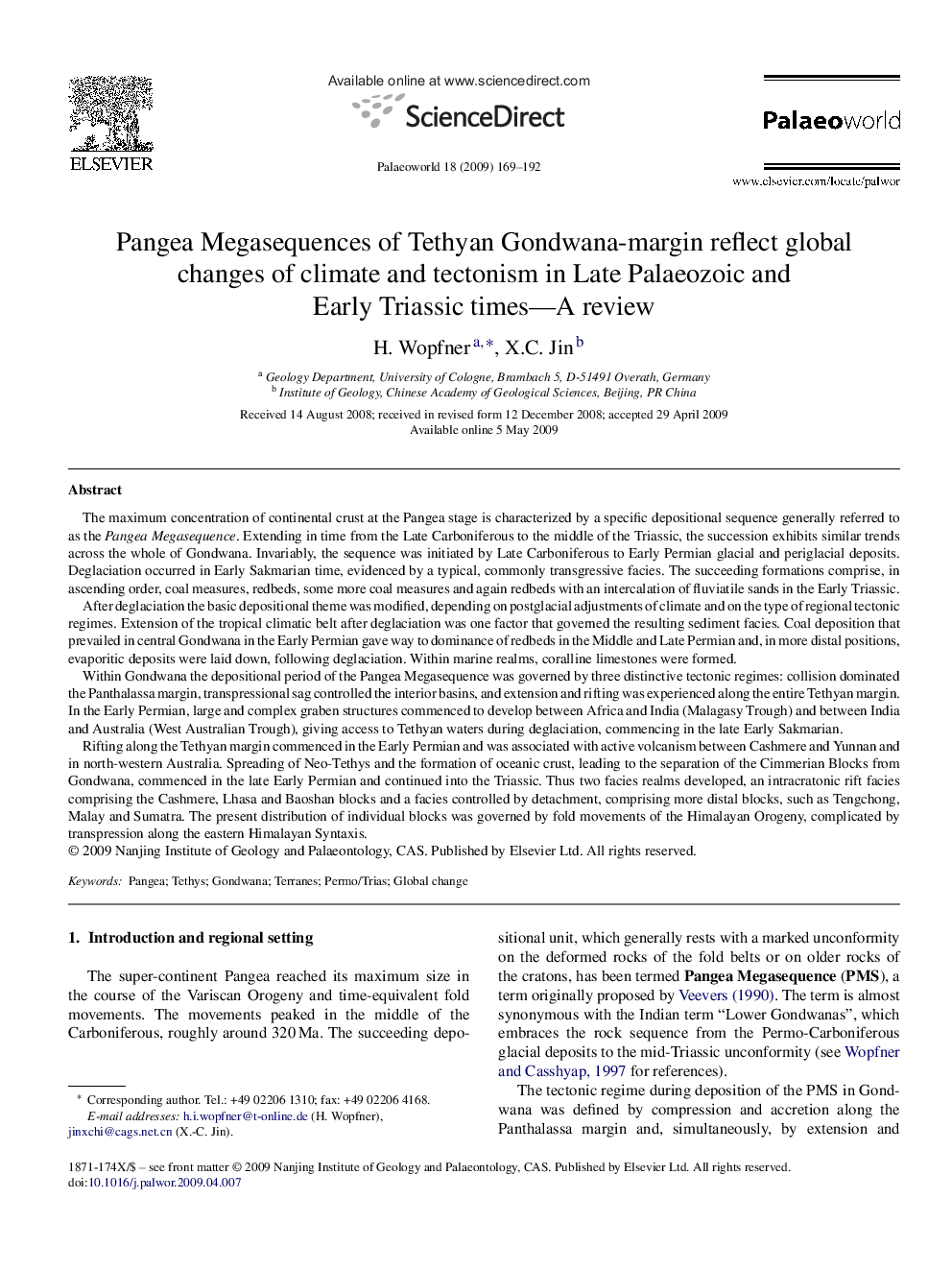| کد مقاله | کد نشریه | سال انتشار | مقاله انگلیسی | نسخه تمام متن |
|---|---|---|---|---|
| 4749946 | 1642284 | 2009 | 24 صفحه PDF | دانلود رایگان |

The maximum concentration of continental crust at the Pangea stage is characterized by a specific depositional sequence generally referred to as the Pangea Megasequence. Extending in time from the Late Carboniferous to the middle of the Triassic, the succession exhibits similar trends across the whole of Gondwana. Invariably, the sequence was initiated by Late Carboniferous to Early Permian glacial and periglacial deposits. Deglaciation occurred in Early Sakmarian time, evidenced by a typical, commonly transgressive facies. The succeeding formations comprise, in ascending order, coal measures, redbeds, some more coal measures and again redbeds with an intercalation of fluviatile sands in the Early Triassic.After deglaciation the basic depositional theme was modified, depending on postglacial adjustments of climate and on the type of regional tectonic regimes. Extension of the tropical climatic belt after deglaciation was one factor that governed the resulting sediment facies. Coal deposition that prevailed in central Gondwana in the Early Permian gave way to dominance of redbeds in the Middle and Late Permian and, in more distal positions, evaporitic deposits were laid down, following deglaciation. Within marine realms, coralline limestones were formed.Within Gondwana the depositional period of the Pangea Megasequence was governed by three distinctive tectonic regimes: collision dominated the Panthalassa margin, transpressional sag controlled the interior basins, and extension and rifting was experienced along the entire Tethyan margin. In the Early Permian, large and complex graben structures commenced to develop between Africa and India (Malagasy Trough) and between India and Australia (West Australian Trough), giving access to Tethyan waters during deglaciation, commencing in the late Early Sakmarian.Rifting along the Tethyan margin commenced in the Early Permian and was associated with active volcanism between Cashmere and Yunnan and in north-western Australia. Spreading of Neo-Tethys and the formation of oceanic crust, leading to the separation of the Cimmerian Blocks from Gondwana, commenced in the late Early Permian and continued into the Triassic. Thus two facies realms developed, an intracratonic rift facies comprising the Cashmere, Lhasa and Baoshan blocks and a facies controlled by detachment, comprising more distal blocks, such as Tengchong, Malay and Sumatra. The present distribution of individual blocks was governed by fold movements of the Himalayan Orogeny, complicated by transpression along the eastern Himalayan Syntaxis.
Journal: Palaeoworld - Volume 18, Issues 2–3, September 2009, Pages 169–192